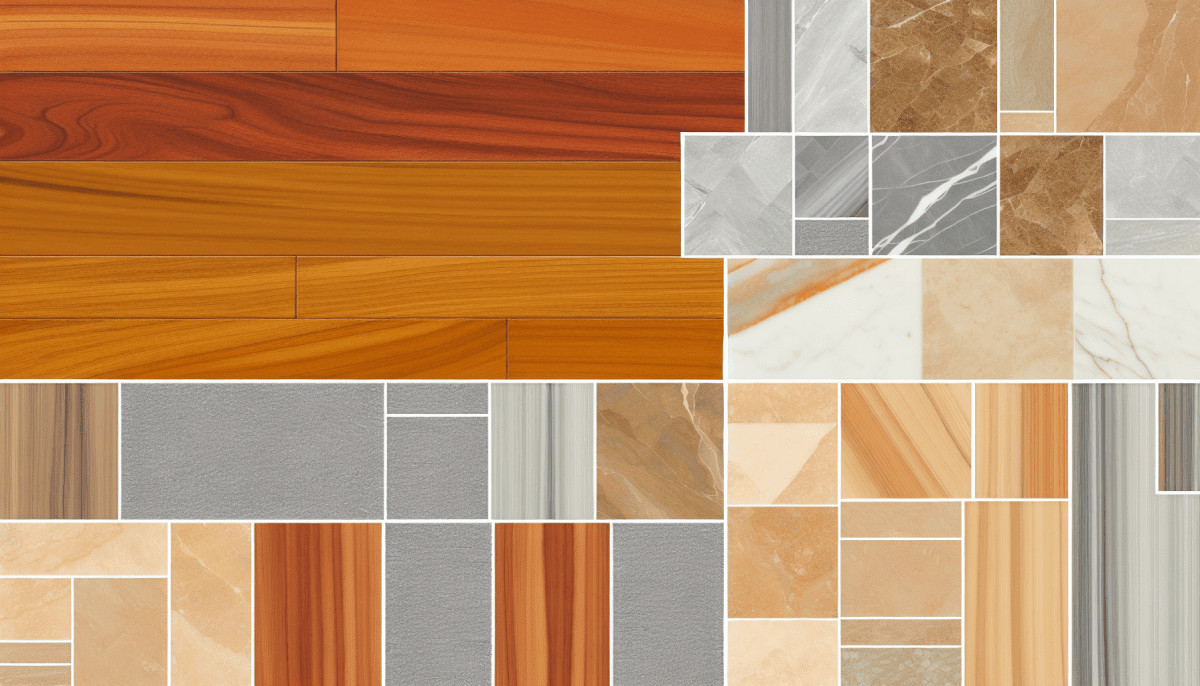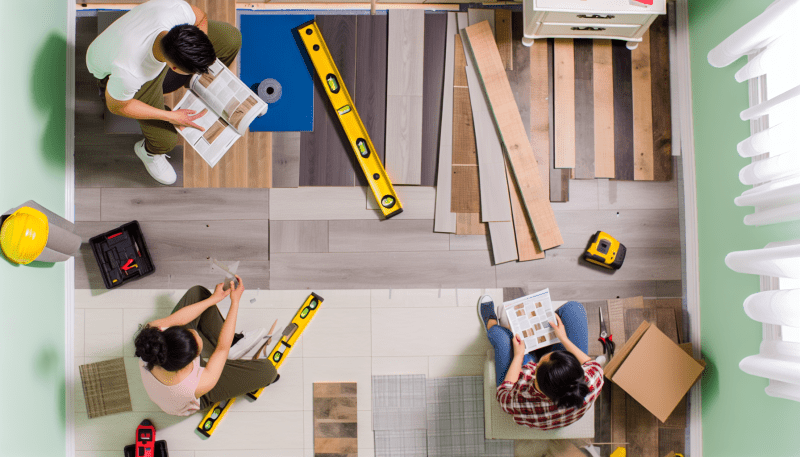When you're mixing flooring styles, one of the most exciting things you can do is blend different textures. Think about how a smooth wooden floor feels next to a soft, plush carpet. Or picture sleek tiles paired with rustic laminate. These combinations can elevate your space, adding depth and character that might otherwise be missing.
Using various textures allows you to create defined zones in your home. For example, in an open-concept area, you could use a sleek vinyl plank in the living room next to a cozy area rug. This contrast can help differentiate spaces without needing walls. It makes your home feel more dynamic and inviting.
Here are a few great ideas for mixing flooring styles:
Don't be afraid to experiment! Mixing flooring styles is all about finding what feels right for your home and lifestyle. Enjoy the process of discovery, and have fun making each area unique while still ensuring it flows together nicely.
Choose a Color Palette That Connects
When it comes to mixing flooring styles, choosing the right color palette is key to creating a cohesive look in your home. A well-thought-out color scheme ties together different materials, making your space feel harmonious and inviting. Start by considering the base colors of your flooring options—are they warm or cool tones? This will help you pick complementary shades that work well together.
Don’t be afraid to play with textures along with colors! For example, combining a smooth, light wood floor with a darker, textured tile can add depth and interest. Think about using a similar color tone in both materials to create a seamless transition. If you’re leaning toward a more eclectic style, consider incorporating accent colors through rugs, furniture, or decor that pull everything together.
Another fun tip is to use samples. Grab a few swatches of the flooring styles you’re considering and see how they look together in your space. Sometimes, a color that seems great in isolation might not mesh as well in your home’s lighting or with your walls. Trust your instincts—if it feels right, it likely is!
Lastly, consider the overall vibe you want for your space. For a cozy, warm atmosphere, lean towards earth tones and soft neutrals. For a modern, sleek look, cool grays and whites can help achieve that. Remember, mixing flooring styles doesn’t just have to be about different materials; the colors you choose play a huge part in how everything flows together!
Balance with Area Rugs and Accessories
When you're mixing flooring styles, area rugs can be your best friend. They help tie different materials together and create a seamless flow from one space to another. Imagine walking from a sleek hardwood floor into a cozy living area with a plush rug underfoot. It adds warmth and comfort, making your home feel inviting.
When choosing an area rug, consider the colors and patterns. A rug can either complement or contrast your existing flooring. If you have a busy tile pattern, a solid color rug may calm the space a bit. On the other hand, if your floors are more neutral, feel free to add a pop of color or an interesting print. Just make sure it echoes elements from other rooms or pieces in your decor.
Accessories like cushions, throws, or wall art also play a significant role in balancing your decor. If you’re mixing flooring styles, use these accessories to draw links between different areas. For example, if you’ve got a rustic wood floor in one room and sleek tile in another, using similar throw pillows or art in both spaces can help bring a cohesive look. It’s all about finding those little connections that make everything feel intentional.
Don’t forget about the scale of your rug and accessories. Bigger isn’t always better; a large rug can dominate a small space. Likewise, smaller rugs can get lost in larger rooms. Aim for balance—choose sizes that fit your space well and consider how each piece can enhance your overall aesthetic while mixing flooring styles.
Transition Seamlessly Between Flooring Types
If you’re considering mixing flooring styles to achieve that perfect look in your home, transitioning between different types can feel a bit tricky. But don’t worry—there are plenty of ways to make these changes seamless and stylish. The key is to ensure that each flooring type complements rather than clashes with the others.
One of the best ways to create a smooth transition is by using transition strips. These handy little pieces fit between flooring types, smoothing out the change while protecting the edges. You can find them in different materials to match your floors, whether you’re moving from hardwood to tile or carpet to laminate. They help keep things tidy and create a more polished finish.
Another great tip when mixing flooring styles is to consider the color and texture. Sticking to similar tones can help make transitions feel less jarring. For example, if you’re switching from a light oak hardwood to a soft beige carpet, make sure they’re in the same color family. Textures also matter—pairing a smooth finish with another smooth surface can create a more natural flow.
Lastly, think about the layout of your space. Open floor plans provide the perfect opportunity for mixing flooring styles, as you can use area rugs or furniture placement to define spaces. This approach not only breaks up the flooring visually but also gives you the freedom to play with different styles while maintaining a cohesive look. Embrace the unique character of each material while keeping everything connected—this is what makes mixing flooring styles so rewarding!



